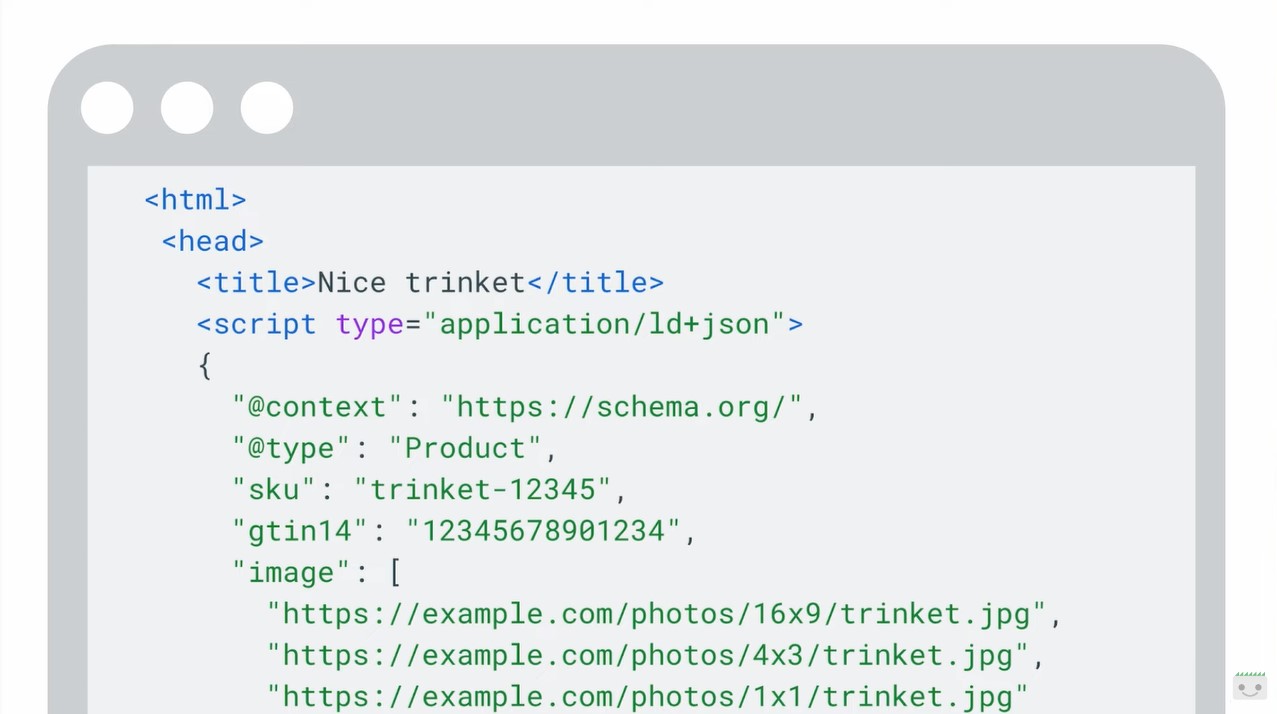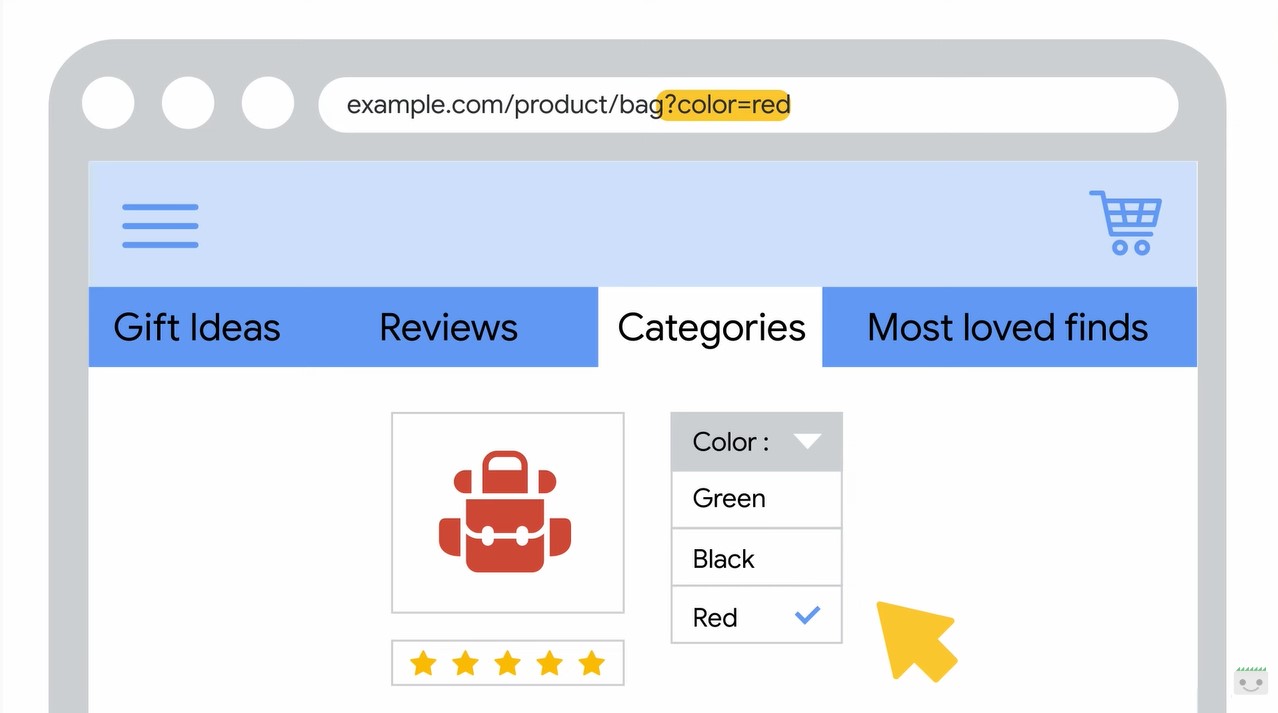e-Commerce sites, a (new) Google guide to SEO optimization
We are increasingly in the age of digital shopping, in the world and also in Italy: the latest international data certify that the B2C market alone will generate a value of almost 5 trillion dollars in 2021, while in Italy we are approaching 40 billion euros (between products and services). The growth in purchases has inevitably also generated a proliferation of e-Commerce sites and an intensification of online competition, and so the struggle for visibility is becoming harder and harder: now more than ever, therefore, Google’s official advice comes in handy, which with the latest episode of the Ecommerce Essentials series takes us to discover eight SEO interventions that could increase the positioning of an e-Commerce site in Google Search.
Google’s SEO tips for e-Commerce
This is not the first time that the search engine team has devoted space to SEO tips for e-Commerce, both at the level of a strategic and philosophical approach to ensure a positive experience with online shopping, and with real technical best practices that can help improve a shop’s performance and its sales.
In recent days it was Alan Kent who returned to the topic, describing in the video eight valuable SEO tactics that could help increase an e-commerce site‘s ranking in Google Search, ranging from the technical details, including the management of product variants and offer pages, to ensuring the right breadth of content on the site to meet the needs of customers at all stages of their journey and put the site on the right track and in front of the right people.
There is, however, one aspect that should not be underestimated – and it is no coincidence that the Developer Advocate says so at the very beginning of his speech: the real challenge is that competitors also aspire to the top position in Google’s search results, so the work is certainly difficult and demanding.
SEO challenges for e-Commerce
Complicating the scene even more is the fact that there is not just one type of SEO, because the work of optimising organic visibility on search engines can have different objectives depending on the type of site. For example, Kent reminds us, a website that generates revenue from display ads generally wants to increase the volume of traffic to the site, but e-Commerce sites more commonly aim to increase sales.
Basically, ‘a large number of visitors who do not make a purchase is less useful than a smaller number of visitors who do make a purchase’, he summarises in the video. Similarly, it is important to think about which products it is useful and strategic to direct traffic towards: for example, is it better to have low-cost, fast-selling products, in the hope of receiving return visits from customers, or products with a higher profit margin? There is no optimal answer for all sites, because these considerations derive from individual business strategy, and this helps us understand the importance of setting goals for the site in order to measure and optimise support to enable the business to achieve these goals.
8 tips for e-Commerce SEO
With this in mind, the expert guides us to the work of SEO optimisation of an e-Commerce project through 8 tips and areas to devote attention and effort to, covering various aspects of the work of running a site.
- Refine the technical foundations of the site
The first piece of advice is to perfect the technical foundations, which are precisely the basis for hoping to achieve the hoped-for traffic goals and for making sense of the excellent content strategy we have studied – because ‘if Google can’t crawl your website, it doesn’t matter how good your content is,’ Kent reminds us.
As in the other episodes, in this video the Googler suggests that owners of e-Commerce sites use the Google Search Console to find technical problems on the site and, through the various reports, visualise the potential problems encountered (with directions for resolution). For instance, in the case of problems with individual URLs, the URL Inspection tool reports problems that have not yet been resolved, just as important is to check that URLs and internal links are crawler-friendly, while also respecting Google’s advice for designing effective URLs and URL structure for e-Commerce.
Other elements to check are page titles, setting a format that includes details such as branding and product colour, so that the title itself provides useful information to shoppers and clearly distinguishes the different products on the site. As we know, then, page titles are used as the ‘basis for the title links shown in Search.
Again, Kent urges consideration of adding structured data to web pages ‘to ensure that Google correctly understands the purpose of each page’: for instance, there is structured data for product descriptions on product pages that can help Google understand product attributes more accurately.
There are actually many other considerations, such as whether to leave out-of-stock products still listed on the site and, if so, how to inform Google that they are not available for purchase at that time, as well as an ‘obvious choice’ to optimise product pages, because we want ready-to-buy buyers to easily find the product on the site, but there are also other aspects to direct our attention to.
- Propose useful content for each stage of the funnel
The second tip is to propose relevant content for users at different stages of the customer journey and funnel.
For example, says Kent, “your home page could be a great landing page for a buyer who wants to buy a photo gift but doesn’t know what to buy yet”: the home page often describes many products in stock, along with special offers, while category pages allow you to be more specific, describing areas where the site offers a range of products – such as bags to hold photographic equipment.
Instead of products, buyers at the beginning of their buying journey may be looking for advice on how to choose the right product, and product reviews may be more relevant to them. In addition to being useful resources for buyers, then, feedbacks can also help increase brand and site recognition and reputation.
To check the breadth and quality of the site, Kent invites us to “think about the likely searches of shoppers at different stages in their shopping journey” and test the queries we have thus derived, checking how our site ranks and how those of our competitors rank; in addition, Search Console’s performance report for the queries in which the site is shown can help us “understand where you’re doing well and where you’re not”.
After determining a set of queries for which we wish to rank well, the Googler suggests looking at the sites that rank higher to see what inspiration we can draw – thus urging us to do a ‘simple’ competitor analysis, answering questions such as ‘what gaps exist in our site? How can we distinguish ourselves from other sites?” and so on.
One possible way to improve product pages that compete with competitors selling the same products is to work on aspects such as product descriptions, which should be improved and made unique: this can help us capture different search traffic than our competitors.
In summary, therefore, the second point urges us to develop a content strategy, test it in the field, measure its effectiveness and then ‘continue to refine and adjust it to help create the distinctive voice of the site’.
- Mark product variant pages correctly
The third tip is to make sure to mark product variant pages correctly, i.e. ‘when you have more than one colour or size of the same product’, because informing Google of the relationship between product pages can help the understanding of the site content.
To look for problems, the Google Search Console can be used to explore the relationship between pages and traffic levels, while the URL Control tool can help us check the status of individual pages.
Basically, however, the advice is to provide a unique URL to each product variant: for example, Kent suggests adding query parameters “to contain the colour or size of the product, then select one of the variants as the canonical variant”.
All variants should include the URL of the canonical page to help Google understand the relationship between the pages.
Finally, the canonical page should include a textual part describing all available variants, such as all colours and sizes. We can use the classic product description, with a reference such as ‘this product is available in green and blue’, but it may also be fine to show all possible colour variants with the color swatch feature ‘and allow the user to change the colour with an al text describing each colour choice in the text’.
This is then the canonical page of product variants that will encounter searches for all colour and size variants that a user can try out.
- Using the same URL in all recurring events
One aspect not to be overlooked are sales events that occur on a recurring basis, such as Mother’s Day, Black Friday or Cyber Monday: tip number four is to reuse the same URL in all occurrences of events, rather than introducing a new URL for each event.
This choice can help Google to correctly understand and trust the purpose of such pages.
To identify any problems, we need to check the URLs of the promotional event pages on the site – there are no (yet?) automated tools for this, Kent admits – and adhere to some common sense rules (e.g. avoid including the current year in the URL path).
After choosing a URL for a promotional event, we should reuse the same URL each time; once the event has passed, it might be useful to leave the page at the top with a summary of previous offers or describe products that might be on sale next time.
For example, for Mother’s Day we could ‘include a number of traditional Mother’s Day gifts’ that the site sells.
From a practical point of view, we should remember to update the page before each event with current offers, keeping the page ‘alive in Google’s indexes all year round, rather than waiting for Google to find and index a new page’ and a new URL each time.
- Take care of page performance
Tip number five concerns the performance of web pages, which is obviously important for users, because ‘a page that takes too long to load is more likely to be abandoned by the user’.
Performance is so important, Kent reminds us, that user experience has become a Google Ranking Signal, a factor that can influence the ranking of pages in search results.
Specifically, the performance aspect can be particularly relevant ‘if we use the same product description provided by the vendor, as other online sellers do’: if two product pages have the same textual content, page speed could be the deciding factor as to which page comes first in search results.
Tools such as Google Analytics can measure the performance of pages, but more comprehensive is the PageSpeed Insights report, with which we can, for example, provide the URL of one of our pages and run a series of lab tests on the page, as well as display field data from the Chrome User Experience Report for the page, if available.
The PageSpeed Insights report includes a list of potential problems identified on the site, as well as a list of recommendations on how to address the issues.
- SEO requires patience
“You’ve been following Google SEO advice for a few weeks now, but you haven’t seen much benefit” is the premise to the sixth point of this video, which urges to “be patient” because “SEO, unfortunately, is a long game, some ranking signals may take many months to change, and worse, there is no guarantee of success”.
Moreover, according to HTTP Archive, about 20 per cent of registered websites support e-commerce, so ‘there is a lot of online competition out there’.
In addition to patience, Kent urges monitoring the site’s performance, for instance by checking with the Search Console whether traffic is increasing, a ‘positive sign that we are on the right track’. And although it can take months to reap the benefits of a content creation strategy, this “does not mean that there is nothing to be done in the meantime”, in particular starting to diversify the site’s traffic sources with marketing campaigns, social media activity, email newsletters, requesting independent reviews for products, promoting the site even on printed flyers (especially for physical shops) with URLs or QR codes.
In addition, the Googler also mentions ‘authentic external links to the site’, which can improve ranking and at the same time bring additional direct traffic.
- Seek professional support
If we have done our best to improve the site but are still not getting the desired results, ‘tip number seven is to seek professional help for the project’.
Google has already stated its position on this issue in the past, and Kent repeats roughly the same concepts: there are many agencies willing to provide real SEO advice and many SEO specialists, but one should beware of those who offer are to improve rankings by buying links to the site. We are well aware that artificial and unnatural backlinks go against Google’s quality guidelines and could negatively affect page rankings.
- Put the user at the centre
The last piece of advice for e-Commerce SEO is to focus everything on the user. As Kent says, the ultimate goal of Google Search “is to put the best possible content in the foreground for users who perform a search”, and while algorithms change over time, the ultimate goal does not change.
This does not mean that we should not measure site performance, using tools such as Google Search Console and Google Analytics to collect data, but that we should think about changes to help our customers instead of focusing only or mainly on performance in Google Search.
For example, continues the expert, we need to check the bounce rate of pages on the site, because ‘if users land on a page but don’t stay on the site, it might be worth reviewing the content strategy, because we are probably attracting the wrong type of users with the current content’.
In principle, the best strategy is to ‘create content and experiences that best serve our customers’: instead of thinking about Google’s specific ranking algorithms, which seem to be working at the moment, it is more appropriate to build the content strategy to serve customers and let ‘Google’s search algorithms take care of finding the best content’.
Finally, in addition to textual content, it may make sense to include high-quality images and videos on the site, because visual media are increasingly important on e-commerce sites and on the web in general.






